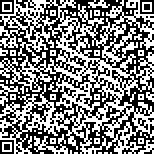| 本文已被:浏览 2643次 下载 2449次 |

码上扫一扫! |
|
|
| 正反交奥尼罗非鱼形态性状差异及对体质量的影响 |
|
陈炳霖1,2, 肖炜1,2, 邹芝英2, 祝璟琳2, 李大宇2, 喻杰2, 杨弘1,2, 胡平各1,2, 马银花1,2
|
|
1.南京农业大学无锡渔业学院 无锡 214081;2.中国水产科学研究院淡水渔业研究中心 农业农村部淡水渔业和种质资源利用重点实验室 无锡 214081
|
|
| 摘要: |
| 为探究不同杂交方式奥尼罗非鱼形态性状对体质量的影响,对埃及尼罗罗非鱼(Oreochromis niloticus)与“夏奥1号”奥利亚罗非鱼(Oreochromisco aureus)正反交子代奥尼罗非鱼群体开展体质量(BW)与全长(TL)、体长(SL)、头长(HL)、体高(BD)、尾柄长(CPL)、尾柄高(CPD)、体厚(BWD)共7个形态性状测定与分析,判断影响奥尼罗非鱼体质量的主要性状,并建立体质量多元回归方程;采用单因素相关性分析、复相关分析、主成分分析等多元分析方法,比较了正反交奥尼罗非鱼的形态差异。结果显示,正交奥尼罗非鱼群体全长、体高和尾柄高3个性状对体质量产生主要影响,回归方程为YBW=154.286+9.016XTL+10.065XBD+17.884XCPD;反交雌性奥尼罗非鱼群体全长和体高2个性状对体质量产生主要影响,回归方程为YBW=92.582+7.415XTL+8.727XBD;反交雄性奥尼罗非鱼群体体长和体高2个性状对体质量产生主要影响,回归方程为YBW=120.299+ 8.661XSL+16.590XBD。主成分分析构建了2个主成分,第1主成分主要代表TS、BDS、CDS、BWS和HS形态特征,第2主成分主要代表BS和CLS形态特征,对PCA1和PCA2作散点图可将正交雄鱼与反交雌鱼有效区分。研究表明,不同杂交方式、不同性别的奥尼罗非鱼影响体质量的形态特征均存在差别,在亲鱼挑选及子代选育工作中,建议采用多性状综合选育的方式,以提高选育培养结果的准确性和稳定性。 |
| 关键词: 奥尼罗非鱼 通径分析 多元回归方程 主成分分析 多性状选育 |
| DOI:10.19663/j.issn2095-9869.20190329001 |
| 分类号: |
| 基金项目: |
|
| Correlation Analysis and Morphological Difference and Contributions to Body Weight of Reciprocally-Crossed Subgroups of Oreochromis niloticus × O. Aureus |
|
CHEN Binglin1,2, XIAO Wei1,2, ZOU Zhiying2, ZHU Jinglin2, LI Dayu2, YU Jie2, YANG Hong1,2, HU Pingge1,2, MA Yinhua1,2
|
|
1.Wuxi Fisheries College, Nanjing Agricultural University, Wuxi 214081;2.Freshwater Fisheries Research Center, Chinese Academy of Fishery Sciences, Key Laboratory of Freshwater Fisheries and Germplasm Resources Utilization, Ministry of Agriculture and Rural Affairs, Wuxi 214081
|
| Abstract: |
| To study the effect of morphological difference and morphological characteristics on body weight of reciprocally-crossed subgroups of Oreochromis niloticus × O. Aureus, this study undertook to track and measure body weight and seven growth-related morphological traits, including total length, standard length, head length, body depth, caudal peduncle length, caudal peduncle depth, body width. Fifty individuals were randomly selected in the orthogonal group, and 50 males and 50 females were randomly selected in the backcrossing group for our analysis. All experimental fish are cultured in the same pond. The results showed that the total length, body depth and caudal peduncle depth 3 traits have a major impact on the weight of forward hybrid subgroups, thus establishing a multivariate regression equation related to body weight as YBW=–154.286+9.016XTL+10.065XBD+17.884XCPD; Meanwhile for female individuals of reverse hybrid subgroups, total length and body depth, were two traits found to have a major impact on body weight, thus establishing a multivariate regression equation related to body weight as YBW=–92.582+7.415XTL+8.727XBD; for male individuals, standard length and body depth are the two traits which have a major impact on body weight, thus establishing a multivariate regression equation related to body weight as YBW=–120.299+8.661XSL+16.590XBD. In order to eliminate the influence of differences in body size among the individuals, we obtained seven proportion characteristics including BS, TS, HS, BDS, CLS, CDS, and BWS, respectively. In the characteristic coefficients plots of principal components factor scores, those seven proportion characteristics were divided into two groups, the first group concluded TS, BDS, CDS, BWS and HS, the other concluded BS and CLS. We drew a scatter plot through the score coefficients of every individuals in principal component factors PCR1 and PCR2. In the plot, the individuals of forward hybrid males could obviously be differentiated with reverse hybrid females. The conclusion showed that the morphological traits affecting body weight were different between different hybridization methods and different genders. In the selection of broodstock and the breeding of progeny, comprehensive traits selection should be adopted to improve the accuracy and stability of the breeding results. |
| Key words: Oreochromis niloticus × O. Aureus Path analysis Multiple regression equation Principal component analysis Multi-trait breeding |